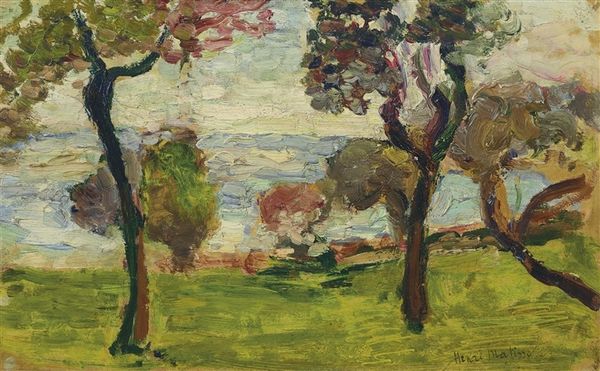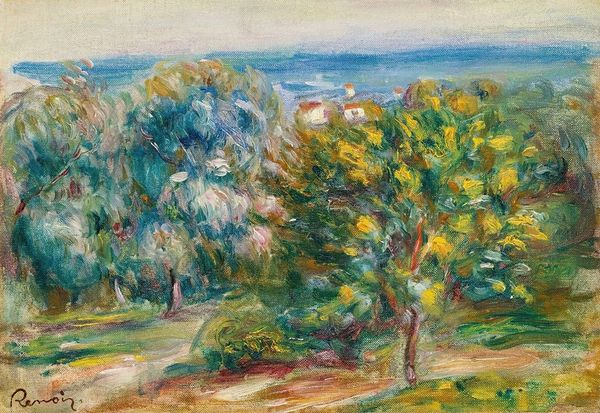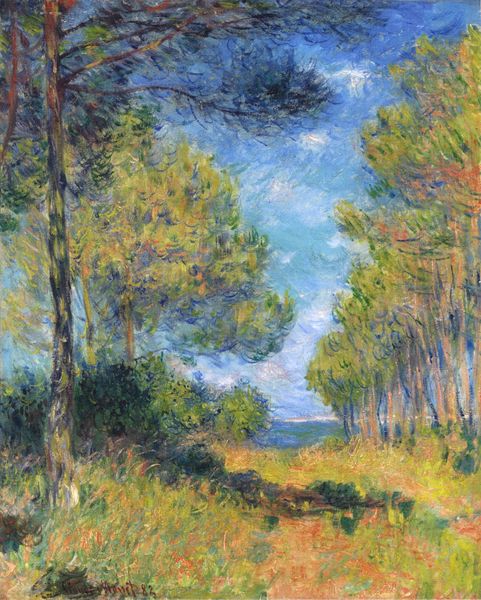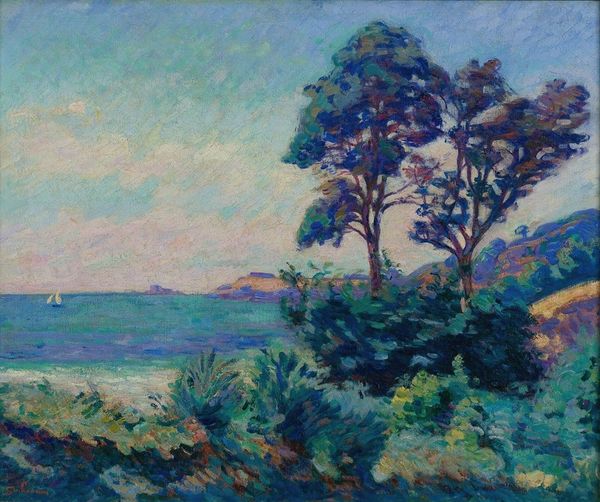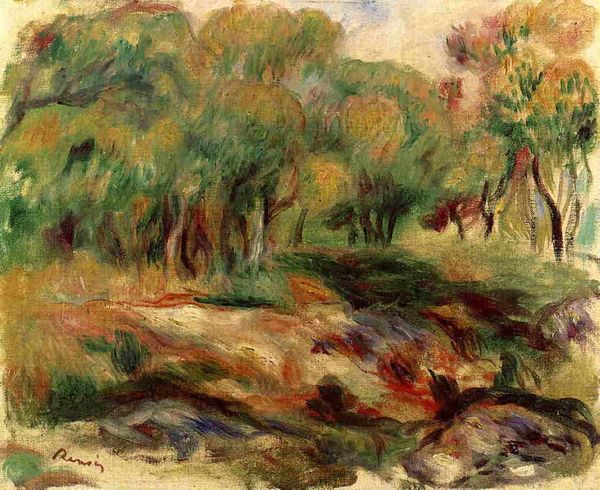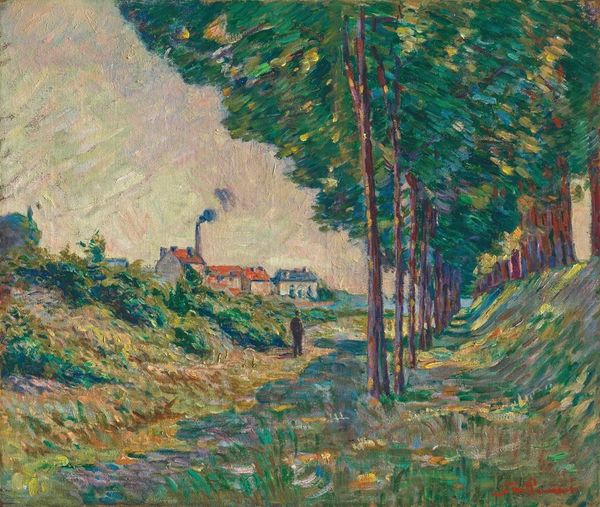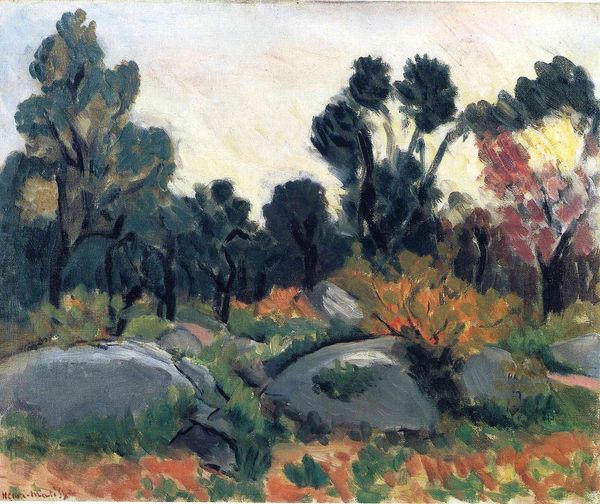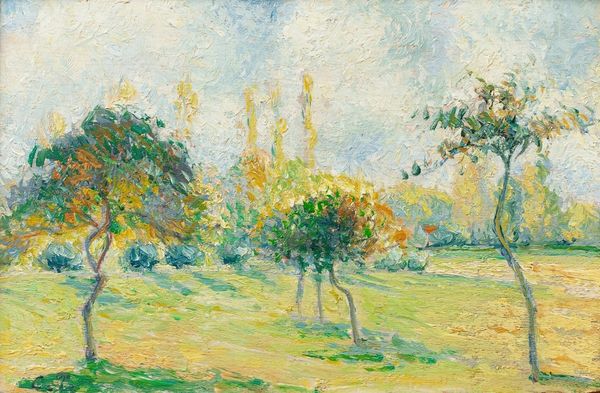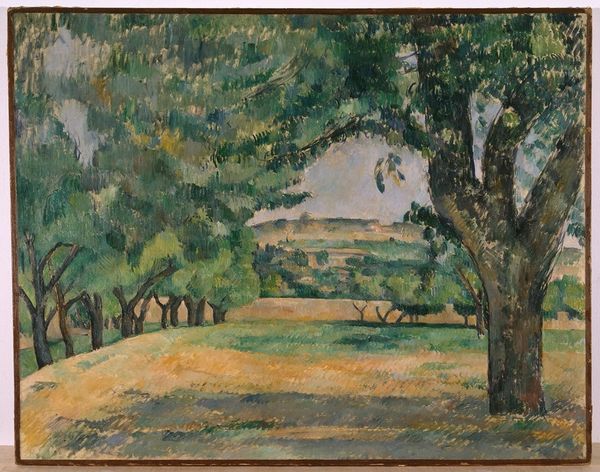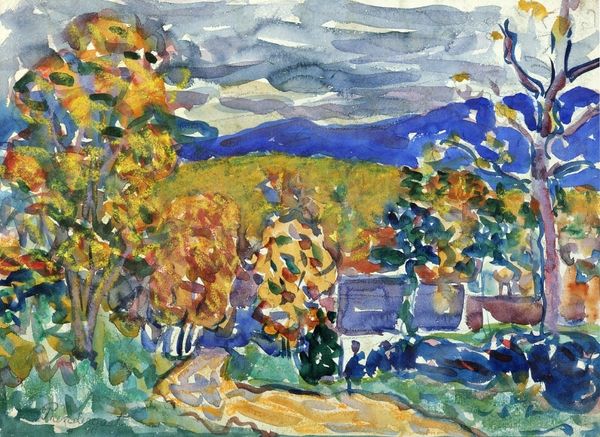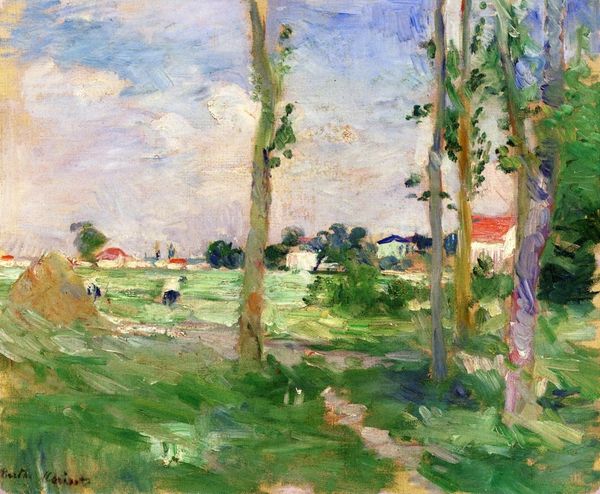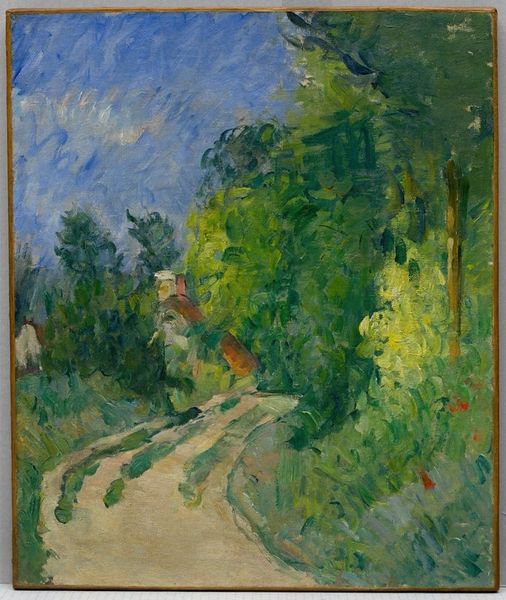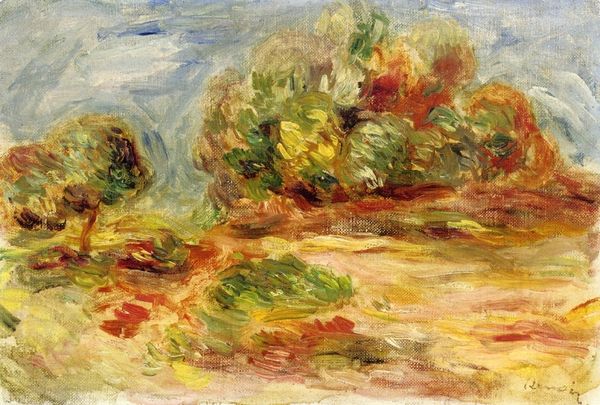
Dimensions: 38 x 46 cm
Copyright: Public domain US
Curator: Upon first glance, this work just radiates a lazy afternoon feel, doesn't it? Editor: It does. You're looking at "Olive Trees", an oil on canvas piece created by Henri Matisse in 1898. It's currently housed at the Pushkin Museum in Moscow. Curator: 1898...right at the cusp of major shifts in art. There's a distinct feeling of pre-fauvism here, a real focus on capturing light and shadow using rather visible brushstrokes. I am very intrigued by the way Matisse rendered the path; it seems to glow! Editor: Yes, notice how he handles the impasto, the thickness of the paint. The heavy application really emphasizes the materiality, doesn't it? You can practically feel the texture of the earth under your feet. Think about the cost and availability of pigments at that time. Such use indicates Matisse's position and ambitions. Curator: Exactly! And that heavy application creates a dynamic surface, inviting the eye to linger and move around the composition. Do you see what appears to be the water barely breaching the background behind the last of trees? It also strikes me how this piece aligns with a growing movement of plein-air painting. Editor: The public was developing an appetite for landscapes and depictions of modern life as cities and the bourgeoisie were emerging. Art institutions like the Salon des Indépendants played a crucial role in showcasing these artists. This artwork fits seamlessly in that rising appreciation for outdoor settings. But beyond just pretty scenery, one wonders, what's being shown, and not shown? Curator: That's an insightful point. It seems like an idyllic scene. A peaceful country scene, perhaps? Editor: Or maybe we, as the contemporary public, are yearning to view an undisturbed scenery untouched by the hands of mankind and social movements during that era? "Olive Trees," through its impressionistic style and emphasis on the natural, can be understood not just as a slice of nature, but also a product reflecting specific historical desires. Curator: Well, considering all of that... I find the materiality speaks to the broader socioeconomic conditions that shaped both the artist's practice and the reception of landscape painting at the turn of the century. Editor: Agreed. It provides a context to contemplate the cultural trends surrounding the rise of landscape and genre art in the late 19th century, doesn't it?
Comments
No comments
Be the first to comment and join the conversation on the ultimate creative platform.
